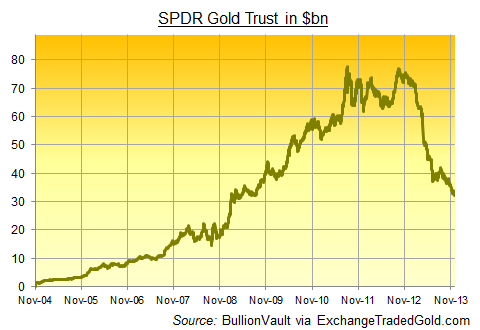Fed Tapering, Jobs & Gold
"A few participants," said minutes from the Fed's December meeting, released this week, "noted the risk that the persistent weakness in labor force participation and low rates of productivity growth might indicate lasting structural economic damage from the financial crisis and ensuing recession."














 Email us
Email us